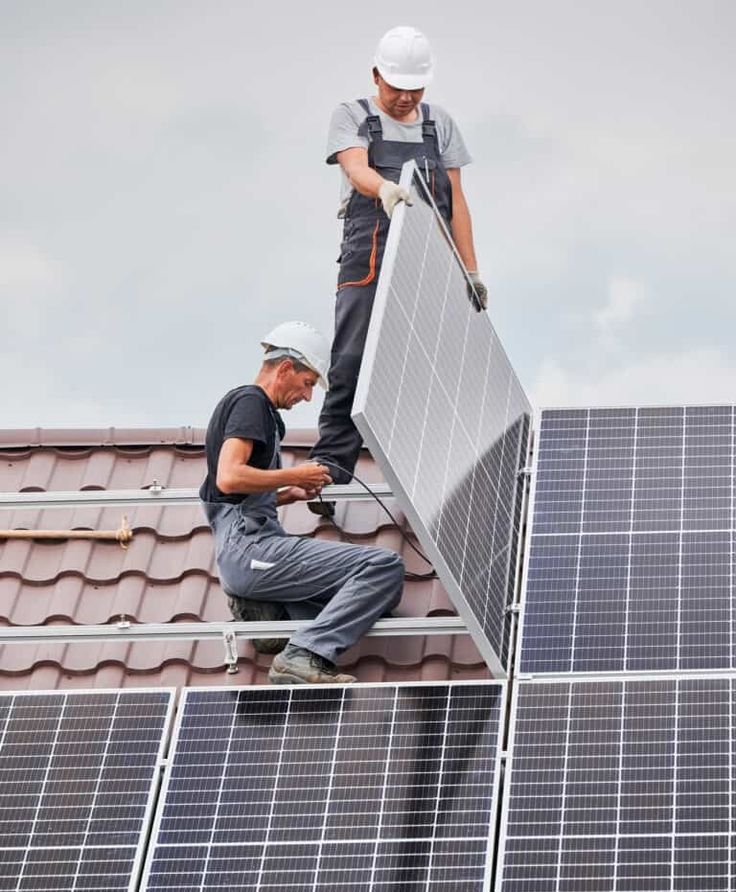Investing in a home solar power system is a significant decision that promises long-term savings on electricity bills and a reduced carbon footprint. However, understanding the initial investment requires a clear breakdown of the various components and services that contribute to the total cost. While prices can vary based on location, system size, and equipment quality, a typical residential solar installation in 2025 in the U.S. generally ranges from $15,000 to $40,000 before tax credits.
Let’s delve into the key elements that make up the cost of a home solar power system.
1. Solar Panels (Modules)
The most recognizable component, solar panels, convert sunlight into electricity. Their cost is typically calculated per watt (W) or per panel.
- Cost per Watt: In 2025, solar panels alone can cost anywhere from $0.30 to $0.90 per watt. This price does not include installation or other system components.
- Quality and Efficiency: Higher efficiency panels (which produce more power from a smaller area) or premium brands will naturally come at a higher price point. While they cost more upfront, they can offer better long-term performance and savings, especially if roof space is limited.
- System Size: The total number of panels needed depends on your household’s energy consumption. A typical 6.5 kW system might require around 17 panels (assuming 400W panels), costing approximately $1,950 to $5,900 for the panels themselves.
2. Inverters
Inverters are crucial for converting the direct current (DC) electricity produced by solar panels into alternating current (AC) electricity, which is what your home appliances use.
- Types and Costs:
- String Inverters: These are more traditional and typically cost less, ranging from $350 to $1,500. One string inverter handles multiple panels.
- Microinverters/Power Optimizers: These are installed on individual panels, offering better performance in shaded conditions and panel-level monitoring. They tend to be more expensive per unit but can optimize overall system output. Microinverters can range from $100 to $200 per panel, adding significantly to the total inverter cost for larger systems.
- System Size Impact: The larger your solar system, the more powerful (and thus more expensive) your inverter or the greater number of microinverters you’ll need.
3. Mounting Hardware and Wiring
This category includes the racking systems that secure the panels to your roof or ground, as well as all the necessary electrical wiring, conduits, and connectors.
- Mounting Structure: Costs vary based on the type of mount (fixed, ground, adjustable, or dual-axis trackers) and the complexity of your roof. Fixed roof mounts are generally the least expensive, while ground mounts or advanced tracking systems are more costly. Expect to pay $20 to $800 per panel for mounting, depending on the type.
- Electrical Components: Wires, circuit breakers, disconnect switches, and meters are essential for safe and efficient operation. These typically add $0.05 to $0.30 per watt to the total cost.
4. Labor and Installation Costs
The expertise required to design and install a safe and efficient solar system is a significant portion of the overall investment.
- Per Watt Cost: Installation labor, including design, electrical work, and physical mounting, can add around $2.25 per watt to the system’s cost.
- Factors Influencing Labor:
- Roof Type and Condition: Steep, old, or complex roofs (e.g., multiple angles, unique materials) can increase labor costs due to added safety measures and time.
- System Complexity: Larger systems or those with advanced components like battery storage require more intricate installation.
- Geographic Location: Labor rates vary significantly by region and local market demand.
5. Permitting and Interconnection Fees
Before installation, you’ll need permits from your local municipality to ensure the system meets building and electrical codes. After installation, you’ll need permission from your utility company to connect to the grid (known as “permission to operate” or PTO).
- Permit Costs: Residential solar permits typically range from $75 to $450, but can be higher for larger systems or in certain jurisdictions.
- Utility Interconnection: Fees for connecting to the grid vary by utility and region.
- Administrative Overhead: These costs also cover the administrative work involved in preparing designs, submitting applications, and coordinating inspections. Reputable installers often handle these processes and include the costs in their quotes.
6. Optional: Solar Battery Storage
While not always included in the initial solar installation, adding a battery storage system is becoming increasingly popular for energy independence and backup power during outages.
- Cost per kWh: Home solar batteries typically cost between $1,000 and $1,300 per kilowatt-hour (kWh) of storage capacity before incentives.
- Total System Cost: A whole-home battery system (e.g., 10-13.5 kWh) can add an additional $10,000 to $18,000 to the total project cost.
- Benefits: Batteries allow you to store excess solar energy generated during the day for use at night or during peak demand, further reducing reliance on the grid and potentially enabling net metering benefits.
Factors Affecting Overall Cost
Beyond the individual components, several other factors influence the final price:
- System Size (kW): The larger the system (more panels), the higher the total cost, though the cost per watt often decreases with scale.
- Energy Consumption: Your household’s average electricity usage directly dictates the required system size.
- Equipment Quality: Premium panels, inverters, and mounting systems will increase upfront costs but may offer better performance and longevity.
- Roof Characteristics: Steep pitches, complex designs, or older roofs requiring repairs will add to installation expenses.
- Local Incentives and Rebates: Federal tax credits (like the Investment Tax Credit), state incentives, and local rebates can significantly reduce the net cost of solar.
- Installer Choice: Different solar companies will have varying pricing structures, labor rates, and equipment partnerships. Getting multiple quotes is always recommended.
Understanding this cost breakdown empowers homeowners to make informed decisions when considering a solar power system, ensuring they factor in all elements from panels to permits, and potential battery storage, for a comprehensive financial picture.

